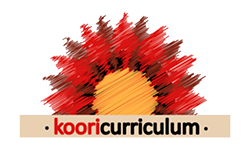Power play is something that emerges universally in preschoolers where themes of good verses’ evil and sometimes aggression begin to appear. The preschool group that I taught last year were no different, they as a collective had a strong interest in Superhero play. I began zoning in and observing their dramatic play and asked questions such as “Who can be a superhero?” and “What do superheroes do?” What I quickly learnt is that most described their heroes as being white and male but what disturbed me the most about my observations of children’s play is that the girls in the group were only role playing male superheroes.
What did this mean? Was the play inadvertently indicating the children’s beliefs about what the dominant race and gender is through play? I wanted to challenge this bias but I didn’t know enough about superheroes myself so I began to research. What I quickly discovered is that most marvel superheroes are white and male with female characters under represented and overtly sexualised. On the Marvel webpage superheroes are categorized according to race so instinctively I was curious as to how Aboriginal superheroes were represented.

I discovered a handful of Aboriginal superheroes including “Kaboomerang Man” and “Willie Walkaway” which are illustrated and described in a very stereotypical way. However what upset me deeply was the way that the comic writers used the dreaming, our spiritual belief system and fictionalized it adding in their own concepts and adapting it to suit the needs of their story. It is the equivalent of changing a bible story and I found it highly offensive. What to do?

I was completely lost but I knew that I wanted each of the children in my care to feel powerful and capable in their own right. I found a great experience on Pinterest which I felt would begin working towards this goal. I took photos of each of the children posing as superheroes which I then printed, laminated and cut out to use on a small world table. This experience was further equipped with various superhero scenes to encourage the children to create their own role plays featuring themselves and their peers as heroes. This experience was highly successful and created a spring-board for further discussion about the qualities they would choose and already liked about themselves. Children began to focus less on the marvel superheroes and more on their own identity.
A creative drawing experience was set up with superhero provocations and a mirror. I sat with the children that chose to engage at the experience and encouraged them to draw themselves. This was later extended when children began to create their own comic books some featuring themselves as the hero in the script. Whilst these experiences challenged the gender bias that the children appeared to have, I didn’t yet know how to challenge race.
On a regular outing to Reverse Garbage I came across some mannequin, this was where my inspiration was born. Ideally I would have liked to source a female mannequin however none were available so I settled for a black male torso. I placed the mannequin in the art learning area and challenged the children who gathered there to help create a superhero. Over the course of a few weeks the rest of heroes missing body parts were constructed and his identity began to take form. The children attributed him with different names and powers and created stories and play around him.
When our hero’s form was near completion I bought in a felted cape of the Aboriginal flag for him to wear draped around his neck. As the flag and its significance for Aboriginal people was embedded in our rooms’ curriculum and culture the message was clear without me providing any explanation. Through this intentional teaching gesture I wanted to challenge any myth that had been generated by popular culture and develop our children’s understanding that Aboriginal heroes can do anything and are not limited to stereotypical traits and abilities. In conjunction to this experience we also sourced several additions of the Koori Mail newspaper and identified heroes in our local Indigenous community. By doing this we were combatting fantasy with reality in attempt to highlight the good deeds that every day people do to make our world a safer and better place.




